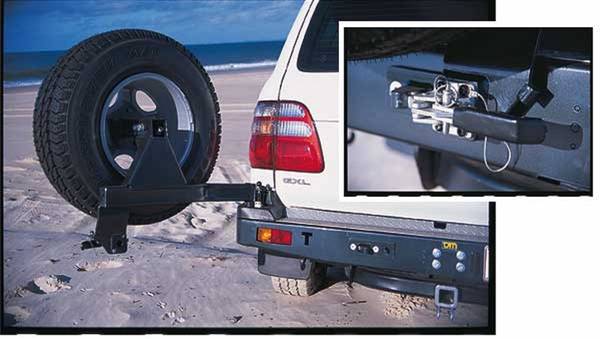Published: · Modified: by Lucy · This post may contain affiliate links · This blog generates income via ads
So I always hated having to slide a spare tire under the bed of my truck. It was a real hassle to try and pull out the jack, prop up the spare tire with it, get under there and manhandle the wheel in place. Then I would have to do all that stuff in reverse when it was time to put it back. I decided to take action and solve this problem once and for all by learning how to build an effective DIY Truck Bed Spare Tire Mount!
This is a detailed DIY tutorial that shows you how to make your own DIY truck bed spare tire mount. It's fairly easy and cost-efficient. There are many ways to do this, with or without computer assistance. You can use these plans as they are or modify them in any way that you want.
Are you ready to build? Let’s begin!
If you have a fantastic truck that you use all the time, and you don't want to put the spare tire where you always do, you can easily make a bracket on the sides of the back of the truck that will hold the tire firmly. The making process is quick and easy to follow. Check the video to learn more about the materials and tools needed.
Here is another video tutorial guide that can help you quickly make a simple spare tire mount. Here are a few things that you’ll need to get started. You’ll need a strut channel 90 brackets, strut T nuts, washers, bolts, threaded EMT handle, and lots more. The making process is quite complicated, but you will get it right as long as you know what you’re doing, you will get it right.
If you have a Toyota Tacoma truck parked in your garage or driveway, you’ll probably need a new location for your spare tire, and this video guide will show you how you can use a part of your truck bed for a spare tire mount. The making process is quick and easy to follow.
Here is another cheap way to mount your tire vertically on your truck bed with these guide’s simple steps. This project costs about $10 for the materials used, and it’s seamlessly easy for beginners to make this for the first time. Check the link to learn more.
This particular spare tire mount for your truck is super solid and relatively inexpensive to make. It’s also easy to remove if you need the bed for hauling stuff.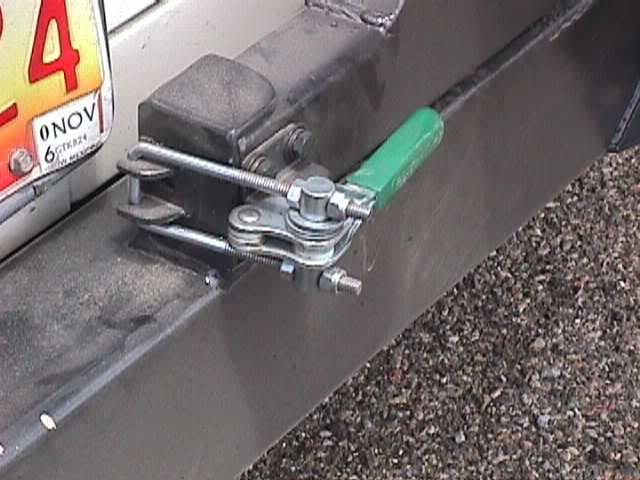 This project is about $200 if you want to make it right. All you need are a few supplies like; a heavy-duty y-strap, bottle jack, washers, d-rings, nuts, and lot’s more. The making steps are super easy to follow. tacomaworld
This project is about $200 if you want to make it right. All you need are a few supplies like; a heavy-duty y-strap, bottle jack, washers, d-rings, nuts, and lot’s more. The making steps are super easy to follow. tacomaworld
Here is another guide that will teach you how to make a simple truck spare tire mount for your truck bed. It doesn’t matter the kind of truck you have, and this project will work perfectly regardless. The tire stands upright on the truck bed close to the cab. The making process is easy to follow. All you need are the suitable materials and tools to begin. Check the link to see what you need to purchase. clubfrontier
This is one of the most incredible spare tire mounts on this DIY guide, but the challenge will be if the mount can adequately hold the tires when driving through rough terrain. This truck spare tire setup can contain two large spare tires, which is a good thing. The materials are super easy to purchase, and the creator got most of his supplies from Amazon. This project will cost you about $100, and you’ll be good to go.
This truck spare tire setup can contain two large spare tires, which is a good thing. The materials are super easy to purchase, and the creator got most of his supplies from Amazon. This project will cost you about $100, and you’ll be good to go.
Here is the cheapest spare tire mount that you can use for any pickup truck at all. The making process is straightforward to follow, so you don’t have to worry about getting it wrong. All you need are a few bolts, washers, screws, nuts, and a few other tools to complete the setup. Watch the video to see how it was made.
This is a unique video guide for a special kind of truck. Today, you’ll be making a spare tire carrier for a Subaru Forester.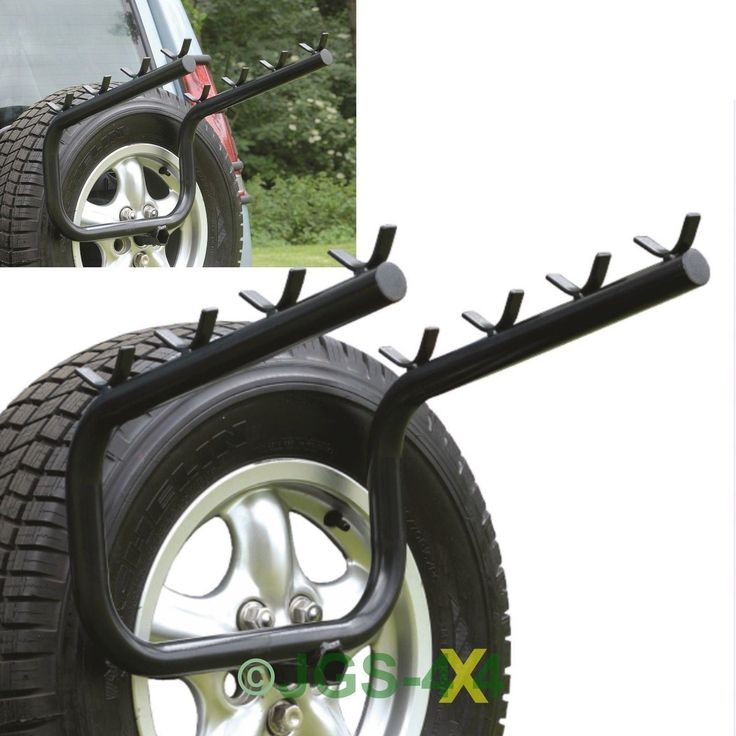 This is an intense project that involves a lot of welding, cutting, and assembling. The making process is quite technical, so you’ll need to watch the video and check the description below to learn more. Nevertheless, it’s the most excellent sturdy spare tire carrier ever made on this DIY guide.
This is an intense project that involves a lot of welding, cutting, and assembling. The making process is quite technical, so you’ll need to watch the video and check the description below to learn more. Nevertheless, it’s the most excellent sturdy spare tire carrier ever made on this DIY guide.
Today, you’re going to build a spare tire mount for a 2008 Nissan titan truck. It’s a beautiful truck that needs an excellent way to mount your spare tire, and that is what this superb guide is offering. All you need are a few heavy-duty supplies, and you’re good to go. Check the link to learn more. This project is pretty complicated and not suitable for beginners. So if you’re trying this out for the first time, keep scrolling and try another DIY guide on this list.
Firstly, the spare tires of trucks are always large and heavy, so to make the proper tire mount for it, you’ll need a lot of heavy-duty materials to make the mount effective and sturdy. You’ll need two support tubes, a U-bolt plate that serves as a platform for the tire mount, and a few other materials. This project is quite time-consuming, but it’s worth it, and as long as this is what you want for your truck, I suggest you give it a try now.
Are you ready to make a sizable spare tire mount that will cost you $50 for the materials? Then tap on the link and check out the video guide. It’s super easy to follow, and the creator took time to explain how it’s made step-by-step in this time-lapse video guide. It doesn’t get better than this.
The side of the truck bed did this spare tire bed mount. Most trucks come with their spare tire mounted vertically on the truck bed, but if that position is not comfortable for you anymore, you can use this video guide’s idea to make a better tire mount effortlessly. You’ll need some high lift jack, scrap metal, threaded rods, bolts, nuts, washers, and lots more for the making process.
It’s super important to have a spare tire on your camper anywhere you’re going. That is why this video guide is focused on helping you make a spare tire mount for your truck camper. Check the link to learn more.
This video guide started with the creator welding the guide frame, then the winch mount, tire bracket, winch assembly, and everything that has to do with the winch and frame. Next comes the placement check to ensure everything is perfect, then the winch setup, and then you’re free to test it and see how well you got the making steps.
Next comes the placement check to ensure everything is perfect, then the winch setup, and then you’re free to test it and see how well you got the making steps.
Today, the creator of this video guide will be building a small spare tire holder or mount for his car camping trailer. The tire is relatively small, so you don’t need to stress about the making process. This time-lapse video tutorial guide will take you through the process step-by-step. Check the video to learn more. You’ll need welding rods, ball bearing side mount drawer slides, and lots of other exceptional materials.
There you go! We have come to the end of this remarkable DIY truck bed spare tire mount, and I hope that you have found the right spare tire mount idea that will suit your needs. It’s a good idea to change your spare tire mount location to somewhere you can have easy access to and where it can be safe and guarded.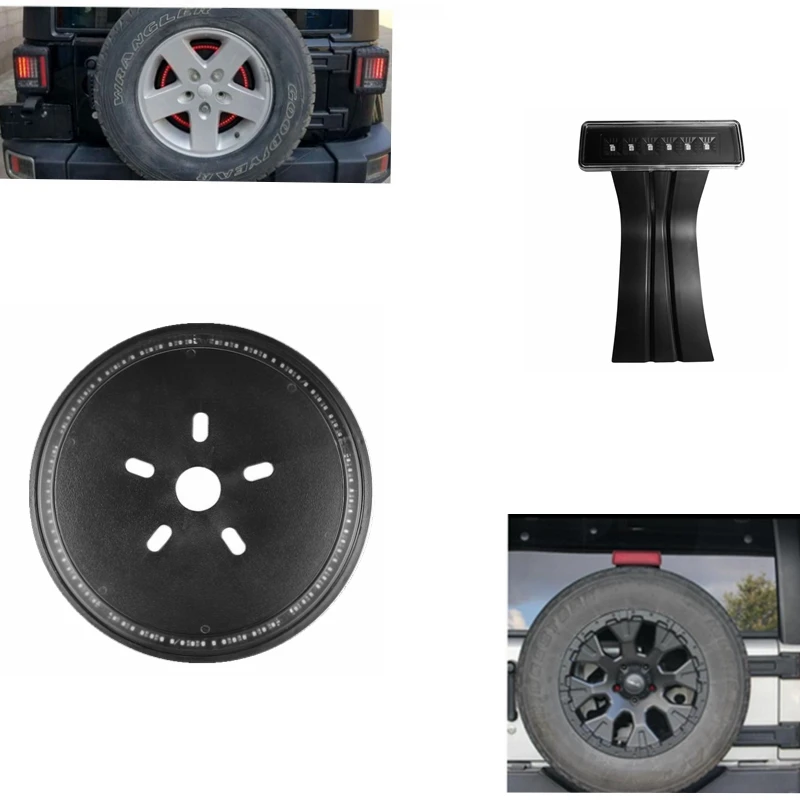 Thanks for checking out the guides above, I hope to have you visit next time. Bye.
Thanks for checking out the guides above, I hope to have you visit next time. Bye.
A spare tire is pretty important insurance when you’re driving or towing an RV. You’ve got lots of tires to concern yourself with, and tire blowouts aren’t as uncommon as we’d all like. The other issue is the fact that, depending on the size of the tires on your RV, you may have difficulty locating a replacement if you need one. For this reason, carrying a spare can be important. If you don’t have a built-in spare carrier on (or under) your RV, you may want to consider an RV spare tire mount. Let’s check them out…
 3) Retractable Spare Tire Mount
3) Retractable Spare Tire Mount We all know that a spare tire is a form of insurance. Those of us who carry a spare tire do so to be prepared in the event of a blowout, flat, or another form of damage to one of our RV (or vehicle) tires.
Generally speaking, we carry a spare in case we’re stranded and need to replace a tire in order to get back on the road.
Many travelers who don’t carry a spare tire rely on a solid roadside assistance plan to come to the rescue in the unfortunate event of a tire blowout or flat. While roadside assistance plans are fantastic, (and we certainly have one that we’ve trusted for many years ourselves), there are a couple of potential problems with relying solely on roadside assistance.
The first is the unlikely but real possibility that a traveler could be stranded in a remote area where there’s no cell signal, hampering your ability to contact your roadside service company.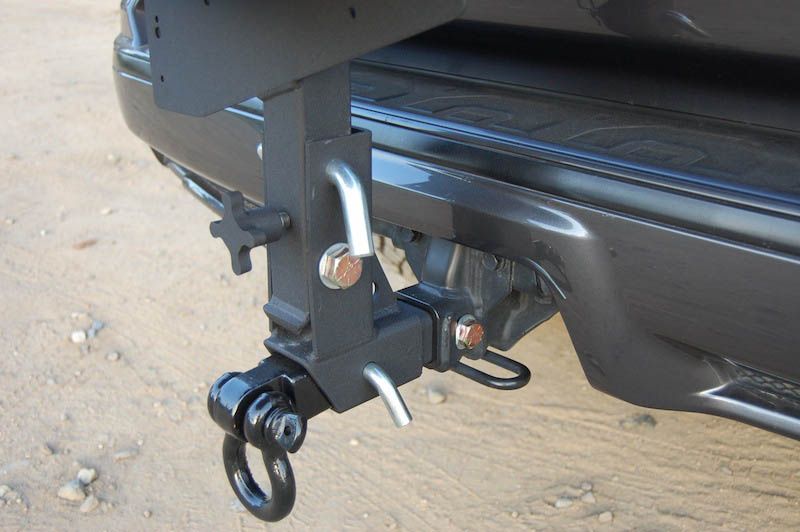
Having a spare tire is helpful even if you’re going to call your roadside service to change it for you. Your spare precludes the possibility that the service won’t be able to find a tire to fit your rig.
And the second is a bit of a newer problem, but it’s a real problem nonetheless. In the past couple of years, it’s become more and more difficult to get RV tires. Because some sizes aren’t readily available in all areas, there’s a possibility that if your rig has a blowout and you don’t have a spare, your roadside service, instead of simply coming out and replacing your tire, may instead have to tow your rig to a nearby shop where you’ll have to wait for the appropriate tire to arrive. This could take days or longer. (We’ve not experienced this ourselves – we’ve only read about it happening. But with supply and shipping issues ongoing, it’s certainly a possibility.)
So, though not everyone chooses to carry a spare tire and it’s not even practical for some (including owners of big rigs like ours), depending on how and where you travel, you may want to carry a spare.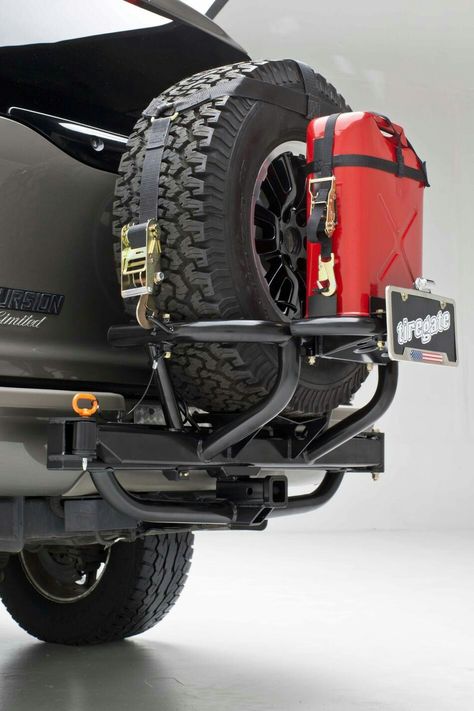 This post is really for those travelers who want to carry a spare but don’t have the means to do so for one reason or another.
This post is really for those travelers who want to carry a spare but don’t have the means to do so for one reason or another.
No – not all RVs come with spare tires, (including ours), but many do. Sometimes you see them mounted on the rear or, less commonly, even the front of an RV or travel trailer. And sometimes you can’t see them at all. This is because they may be mounted under the rig.
However, newer RVs often don’t come with spare tires, jacks, or tire-changing tools. This is why RVers who want a spare may need to find a way to mount it to the rig. This is where the RV spare tire mount comes into play.
An RV spare tire mount is simply a way to carry a spare tire on your RV. There are a variety of ways to mount a spare, and the best way really depends on the RV itself.
In the event of a tire failure, a spare tire mount allows you to carry an extra one to use so you can get back on the road.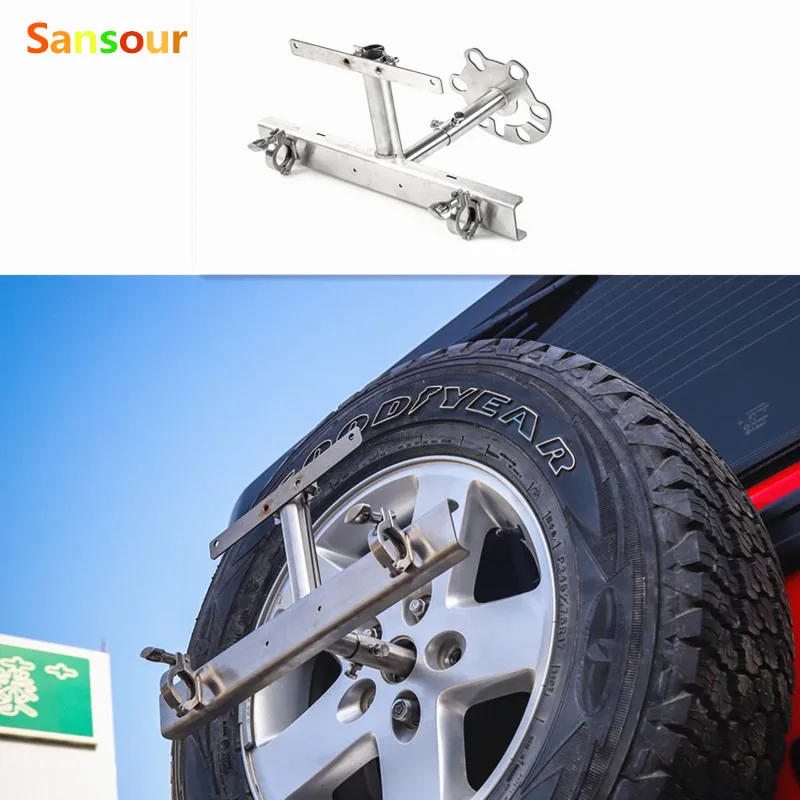
You can mount a spare tire on almost any RV, though it’s unnecessary to do so in some circumstances, particularly with certain rigs. We’ll get into that shortly. First, let’s take a look at some of the most common types of RV spare tire mounts.
Depending on the type of RV you have (Class A, Class B, Class C, travel trailer, 5th wheel, etc.,), there are various types of spare tire mounts available for the optimal mounting of a tire to your rig.
A hitch-mounted spare tire mount is an easy way to mount a spare tire onto your RV. If you’ve got a hitch receiver on your rig, this type of mount simply requires the purchase of a mount that fits your hitch receiver.
For example, this hitch-mounted spare tire mount from CURT fits a standard 2” receiver. You’d simply attach the mount to your hitch and mount your spare tire to it. This mount would also work with a hitch receiver located at the front of a truck or travel trailer.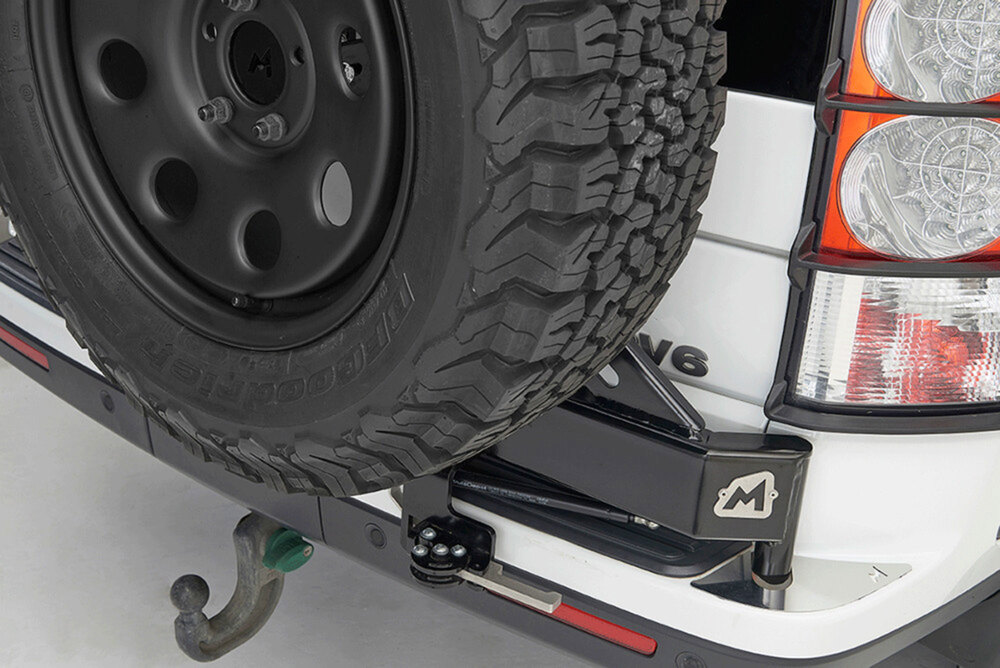
CURT High Trailer Hitch Spare Tire Mount for 2” Receiver
A trailer tongue spare tire mount fits on the tongue of a travel trailer or rear bumper. They’re lightweight, so they don’t add a lot of weight to your rig (which can be important to ensure you don’t exceed the hitch/tongue weight capacity of your towing vehicle).
This Camco Eaz-Lift tire carrier, for example, weighs only five pounds. It fits bumpers and trailer tongues up to 6” tall and 3.5” wide.
Camco Eaz-Lift Spare Tire Carrier
Retractable spare tire mounts sit under the RV and have a telescopic design allowing the tire to slide out from its central mounting location under the rig.
This Retract-a-Spare from BAL RV Products, for example, mounts under the frame rails and is capable of fitting frame widths from 52” to 72”.
This particular mount can handle tires up to 16.5”, (wheel and tire).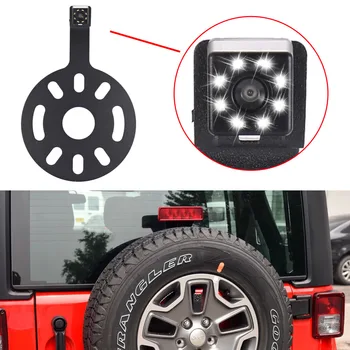 Interestingly, one reviewer noted that he’s carried a 72-pound tire on this retractable mount over a couple of long trips and has found it durable and capable. The mount itself weighs 20 pounds.
Interestingly, one reviewer noted that he’s carried a 72-pound tire on this retractable mount over a couple of long trips and has found it durable and capable. The mount itself weighs 20 pounds.
BAL Retract-a-Spare
Some RVs, travel trailers, and trucks are best suited to carrying a spare tire on a front-mounted carrier. In fact, some people who haul a travel trailer with a truck choose to front-mount a spare tire carrier to their truck, rather than mount a spare on/under their camper, in order to avoid any issues with the weight being added to the trailer/hitch.
This front mount spare tire carrier from Draw-Tite fits a standard 2” hitch receiver, and actually has many excellent reviews for both front and rear-mount carrying experiences, including from off-roaders. That said, it’s designed to be a front mount carrier and, according to reviewers, while it works for some rear-mount applications, it won’t work for all.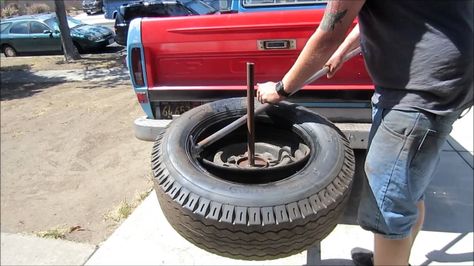
Draw-Tite 6715 Front Mount Spare Tire Carrier
Some rigs require the use of a heavy-duty RV spare tire carrier. A large Class A RV, for example, would be well-served with a carrier like the Roadmaster Spare Tire Carrier with its spring-loaded, auto-latching features and heavy-duty (10,000 lb. max) capacity.
This heavy-duty Roadmaster spare tire mount is designed to carry a spare for big rig RVs (Photo credit: Roadmaster)
The Roadmaster spare tire carrier is designed to pivot for easy access to rear compartments, and mounts into a standard 2” receiver hitch. This carrier accommodates 16”, 16.5”, 19.5”, 22.5”, and 24” wheels.
While most RVers certainly aren’t going to change a 24” wheel on the side of the road, what this heavy-duty carrier does is guarantee that when your roadside assistance service arrives, you’ll have a tire ready to go.
Roadmaster Spare Tire Carrier
Not every RVer wants or needs to carry a spare tire.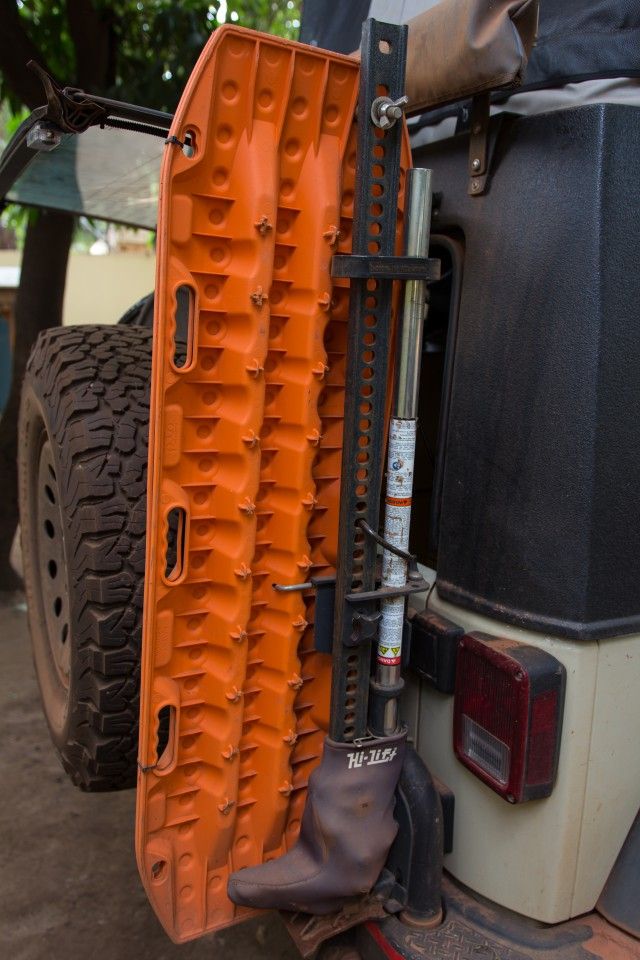 If you travel mostly along paved roads in the central part of everywhere, you’ll likely be able to reach your roadside assistance service to come out in the event of a blowout or flat. If they have a tire to fit your rig in stock, you’ll be back on the road in no time. If not, they may have to tow you to a shop that can order a tire for you.
If you travel mostly along paved roads in the central part of everywhere, you’ll likely be able to reach your roadside assistance service to come out in the event of a blowout or flat. If they have a tire to fit your rig in stock, you’ll be back on the road in no time. If not, they may have to tow you to a shop that can order a tire for you.
But if you travel off-road or in very remote locations, or if you’re heading up the ALCAN Highway on your dream Alaska road trip, you’ll want a spare tire for sure. All of these options are available to you, covering just about any RV.
A spare tire allows you to carry a tire that guarantees that you’ll have your own tire in stock should you need one.
Join our newsletter to learn about all things RV-related. Every week we offer free tips, tricks, product reviews, and more to our online community of RVers. So, whether this is your first time on the road or you’re a seasoned expert, we’d love for you to geek out with us!
We'd Love It If You Shared This!
Contents of the article
Hello everyone! When you go on a trip by car with a trailer, you should think in advance about the likelihood of a tire puncture.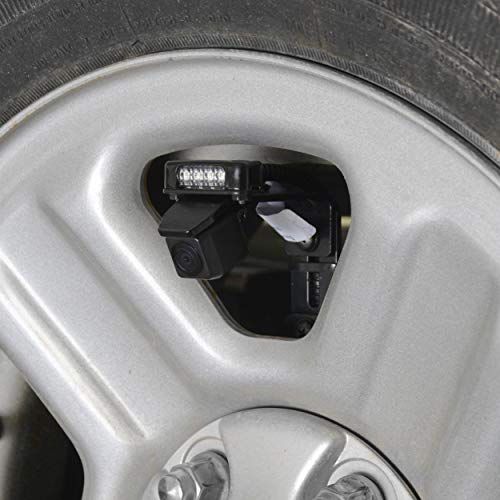 And not only on the car itself, but also on the trailer vehicle. The only question is how and where the spare tire is located on the trailer, what can be done for such purposes and how to ensure the possibility of transporting another wheel with your own hands.
And not only on the car itself, but also on the trailer vehicle. The only question is how and where the spare tire is located on the trailer, what can be done for such purposes and how to ensure the possibility of transporting another wheel with your own hands.
In fact, there are several options here. We will consider each of them separately. It is important to understand that a spare tire is of great importance in such a situation, since being left without 1 wheel means that it is almost impossible to move further.
If you have your own options, a special and original mount that you can buy or make yourself, be sure to leave feedback and tell us about your ideas in the comments.
Let's start with how the spare wheel can be transported. Since we are talking about a light trailer, such an element as a spare tire basket, which is the prerogative of semi-trailers, can in principle be excluded.
The basket requires a sufficiently close placement of the structure relative to the roadway.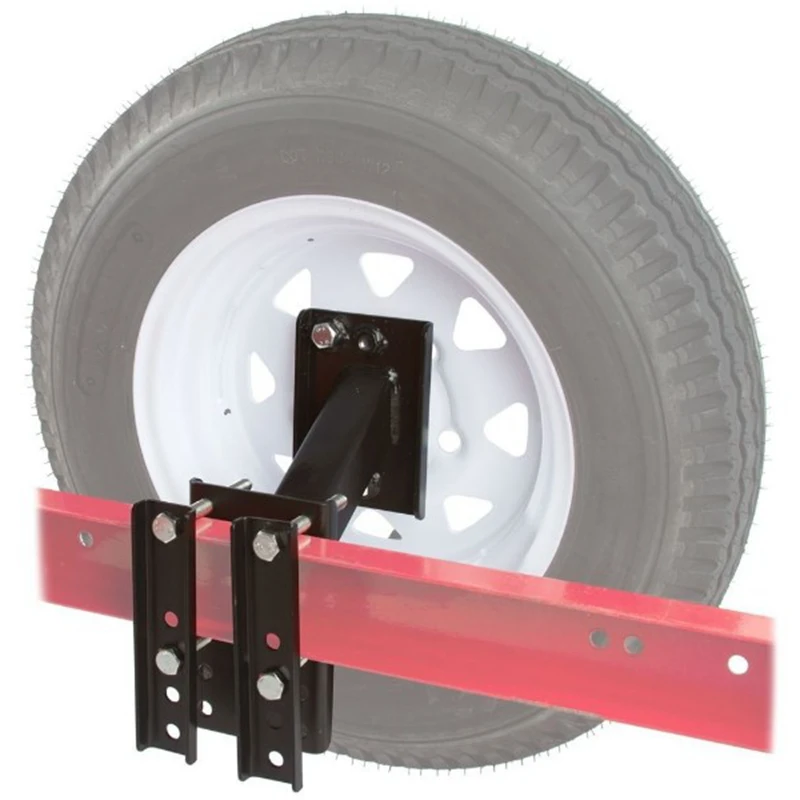 Thus, the clearance is significantly reduced if you put the basket on a light trailer. Consider more realistic alternatives. Namely:
Thus, the clearance is significantly reduced if you put the basket on a light trailer. Consider more realistic alternatives. Namely:
Then you yourself understand that the option of installing instead of a car spare wheel should be excluded immediately.
As for placement on the roof, in the trailer and in the trunk of the car, as well as the use of ropes and harnesses, these options are more realistic, having much in common with reality.
But do not rush to conclusions, throw the spare tire into the trunk or throw it into the trailer.
Such options also have their own nuances, more like disadvantages:
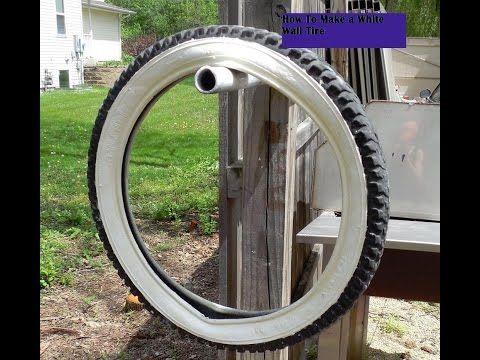
There are many reasons. But there is only one conclusion. Just discard these ideas. They can be used in extreme cases, when there is no alternative, and you need to quickly get together.
When there is time, it is better to take a more correct and logical path.
This is perhaps the most correct and competent way to attach a spare wheel to a trailer. Manufacturers of trailers and accessories for them offer special brackets for sale.
The most obvious example is the brackets from MZSA and Kurgan trailers.
Do not think that their brackets are only suitable for caravans of these companies. These are fairly versatile designs. The main condition is the presence of a V-shaped drawbar. It provides the necessary space for fixing the mount for the spare tire, and also makes it possible, without compromising the performance of the trailer itself, to additionally transport a full-fledged spare tire, whether it has a radius of 13 or a more impressive size.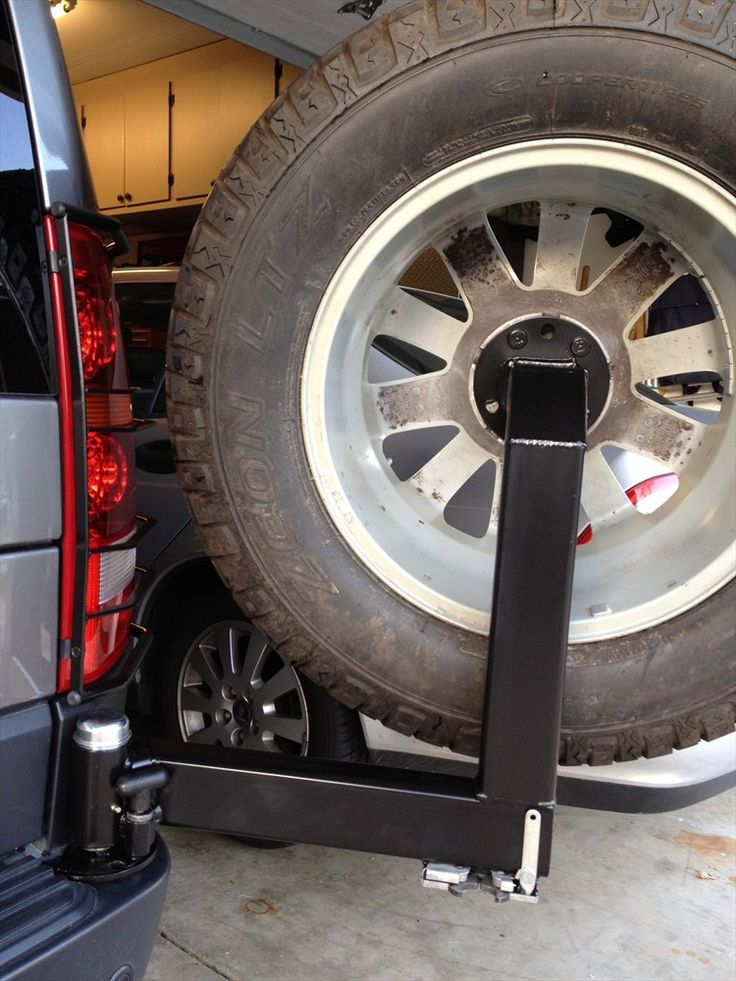
It is better to buy a spare wheel according to the size of the one installed on the trailer. This will allow you to maintain driving characteristics and calmly continue the journey.
Mounting bracket available in a wide range. It can be installed on a boat and a regular flatbed trailer. Again, I repeat, the main thing here is the shape of the drawbar.
I advise you to choose the right equipment when buying a trailer. Some try to save money by choosing a trailer in the simplest configuration. But this is a common mistake.
The bottom line is that a trailer that is correctly selected in terms of its equipment and configuration significantly expands the possibilities. The same spare wheel bracket is considered by many to be an unnecessary and unnecessary element. But imagine for a moment the situation that the wheel burst on the road. How to be further? Wait for help, or try to move on your own on a broken wheel? It is dangerous and sometimes useless.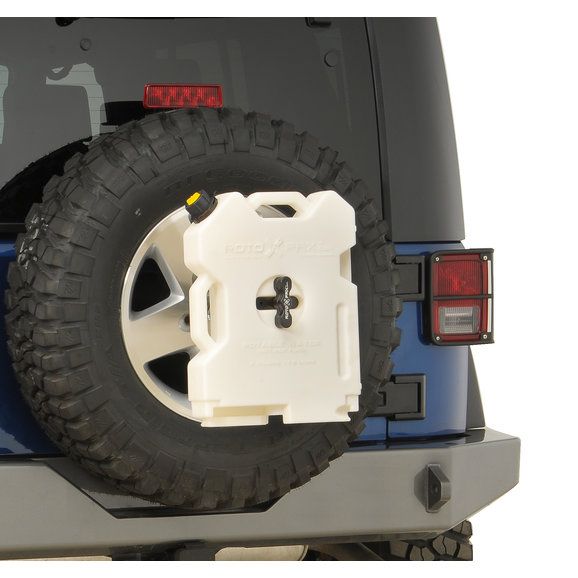 You can only make it worse. And when there is a native spare wheel, all that remains is to get the jack, raise the trailer, remove the old wheel, install the spare and that's it, you can safely continue the trip.
You can only make it worse. And when there is a native spare wheel, all that remains is to get the jack, raise the trailer, remove the old wheel, install the spare and that's it, you can safely continue the trip.
Brackets are installed under the front of the body. It has special fasteners that provide fixation. Thus, the spare wheel bracket does not interfere with operation and does not interfere.
On the net you can find a wide variety of instructions and videos and photos with recommendations on how to mount a spare wheel on a regular or boat trailer. Similar examples are considered on trailers Krepysh, KZAP 8140, products of the company Trailer, etc.
The simplest options are simply to tighten the wheel on the drawbar using straps and harnesses. Not the best option. Plus, excessive constant tension can deform the tire.
Among all this diversity, one method caught my attention. I will roughly describe what is at stake:
 It is desirable that in size it coincides with the holes in the hub in the spare wheel;
It is desirable that in size it coincides with the holes in the hub in the spare wheel; Before using this mounting option, make preliminary measurements so that the spare tire takes up a minimum of space and does not interfere with loading and unloading operations.
Others weld threaded metal studs onto the trailer tongue itself by threading them through the wheel mounting holes. A few screws are screwed on and you're done.
With all the variety of self-made mounting methods, I consider the use of a factory bracket to be the most optimal. These are tried and tested designs that are the right size and provide the safest and most practical way to stow a spare wheel.
Thanks to everyone who reads us! Subscribe, leave comments, ask questions and tell your friends about us!
Watch this video on YouTube
LPG equipment of a car is a design that allows you to use gas as fuel. At the moment, many car owners decide on a rather serious intervention in the design of the car and save an impressive amount of personal funds. After installing the HBO system, some drivers are faced with the problem of where to hide the spare tire for the car? The spare wheel is the main item in the car, because in the event of a puncture of the main wheel or other unforeseen situation, a damaged wheel can be replaced with a spare wheel.
Usually, after installing LPG, the spare wheel continues to lie on top of the luggage compartment shelf, covering the regular place in the car, in which, after the installation of gas equipment, the toroidal cylinder is located. A big plus of this method is that you do not need to spend extra money. At the same time, this installation method has a number of disadvantages. Firstly, the view of the trunk seems cluttered, the second disadvantage is that the spare wheel in the luggage compartment takes up quite a lot of space, and thirdly, since the spare tire is not fixed, it will “jump” in different directions during maneuvers.
A big plus of this method is that you do not need to spend extra money. At the same time, this installation method has a number of disadvantages. Firstly, the view of the trunk seems cluttered, the second disadvantage is that the spare wheel in the luggage compartment takes up quite a lot of space, and thirdly, since the spare tire is not fixed, it will “jump” in different directions during maneuvers.
Pros
Cons
The next method is that we attach the spare tire with the help of fasteners to the back of the sofa or to another free place in the car. The spare wheel can be attached to the back of the rear sofa, if the back height is sufficient, and for your comfort, the spare wheel can be placed in a special protective case. If the spare wheel cannot be fixed to the back of the sofa, there is an option: attach it to the left or right edge of the luggage compartment.
If the spare wheel cannot be fixed to the back of the sofa, there is an option: attach it to the left or right edge of the luggage compartment.
Pros
Cons
The meaning of this method is to attach the spare wheel under the body of the car, thus we place it on the outside of the car. This method is quite often used in minivans or minibuses. In fact, there is also the possibility of placing a spare wheel outside the cylinder. The specified option for mounting the spare wheel is quite convenient from the side of saving space in the luggage compartment, but its minus is that a certain mount is required to install the spare wheel under the car body.
Pros
Cons
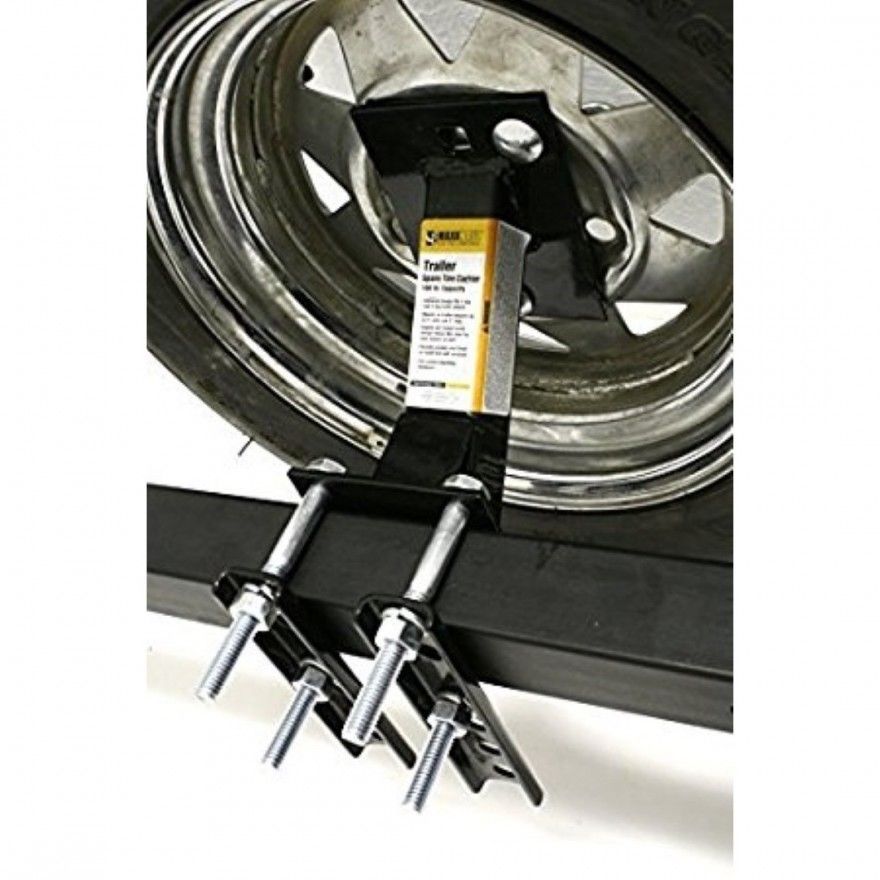
There is also an option to purchase a stowage instead of a spare tire. The main difference between a wheel of standard sizes and a stowaway is that it has a smaller diameter and thickness, and its essence is that in case of force majeure that happened on the road, you can drive on your own to the first tire change station where you can be patched hole in the wheel. The dokatka is fixed in the same way as a regular wheel, but the main advantage of its use is its smaller size and thus allows you to use more free space in the luggage compartment.
Pros
Cons
Some motorists use repair kits that repair the defect and repair the wheel on the spot if the hole that has appeared on the road is insignificant. The resulting puncture can be “patched” with the help of the sealant that was in the repair kit, and after a while the wheel can be pumped up and you can go further. The disadvantage of this method is that in case of a serious blow and a large hole, neither the repair kit nor the pump will be able to help you and you will have to call a tow truck.
The resulting puncture can be “patched” with the help of the sealant that was in the repair kit, and after a while the wheel can be pumped up and you can go further. The disadvantage of this method is that in case of a serious blow and a large hole, neither the repair kit nor the pump will be able to help you and you will have to call a tow truck.
Pluses
Cons
If none of the previous options suit you, you may be attracted to such a device as a raised floor. This device allows you to put a second tier in the luggage compartment, in which the spare tire will be placed, and on top there will be the main trunk shelf. With this option for placing a spare wheel, it will take quite a lot of effort and your time, but also after installing the raised floor, you will have a full-size trunk. The raised floor can be made on your own, or you can easily buy it in specialized auto stores.
The raised floor can be made on your own, or you can easily buy it in specialized auto stores.
Pros
Cons
If you have a crossover or minivan, then there is an option to place the spare wheel on the rear door of the car. This is a rather serious decision, but after installing this option, the appearance of your car will not suffer, but on the contrary, it will become quite nice.
Advantages
Cons
We hope that the above options will solve your problem with the location of the spare wheel after installing HBO. Also, if you have any questions related to the LPG system or you want to consult, our company Grand Technology Gas will be happy to help you.